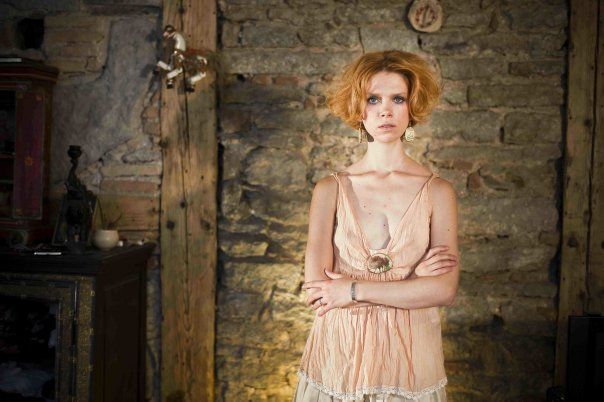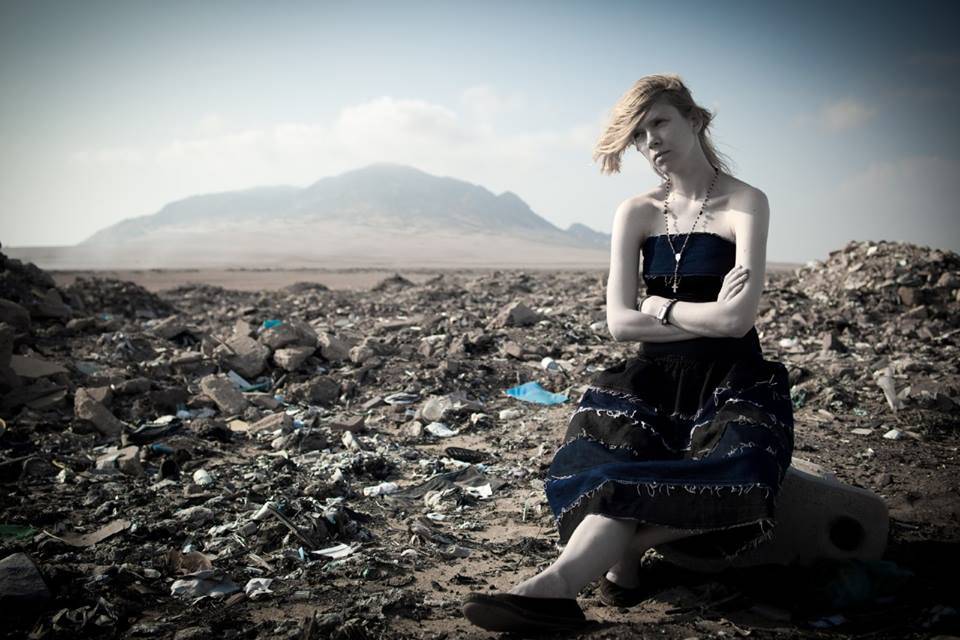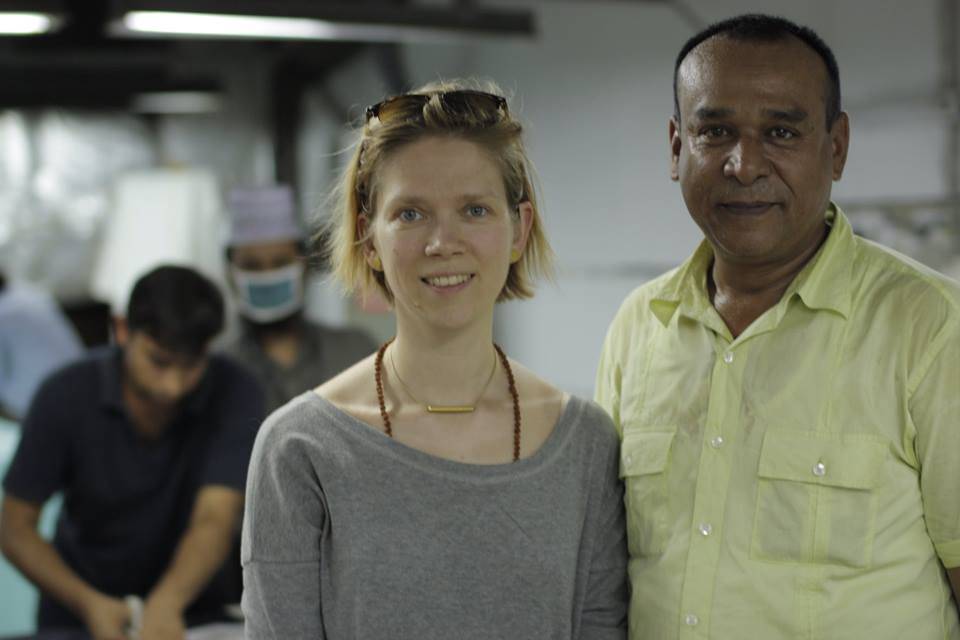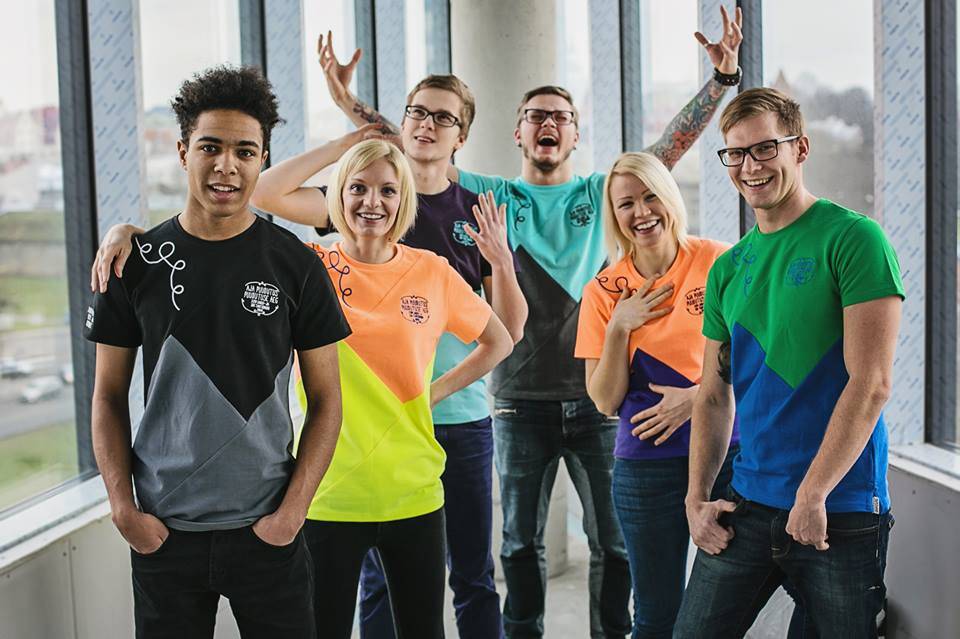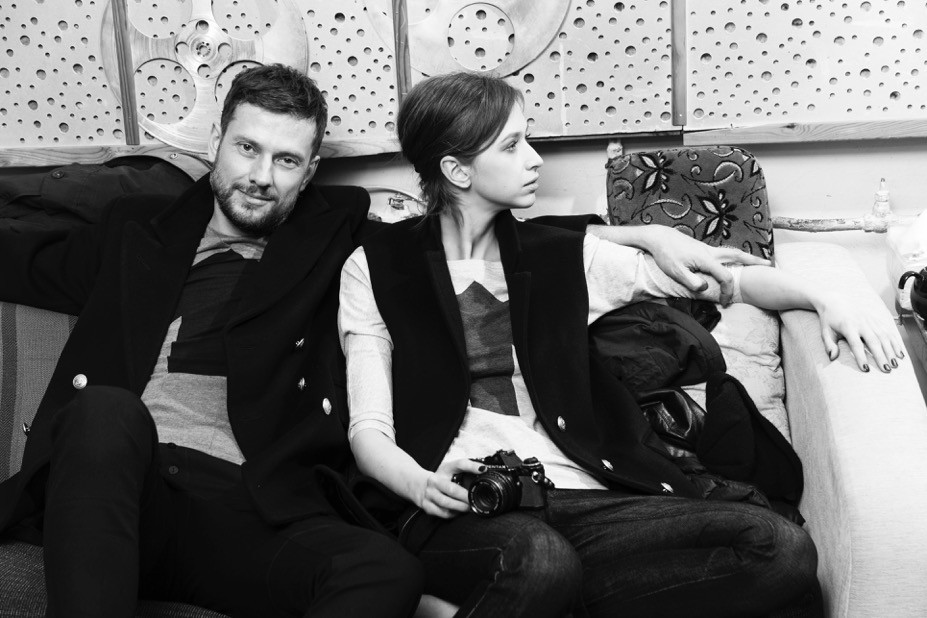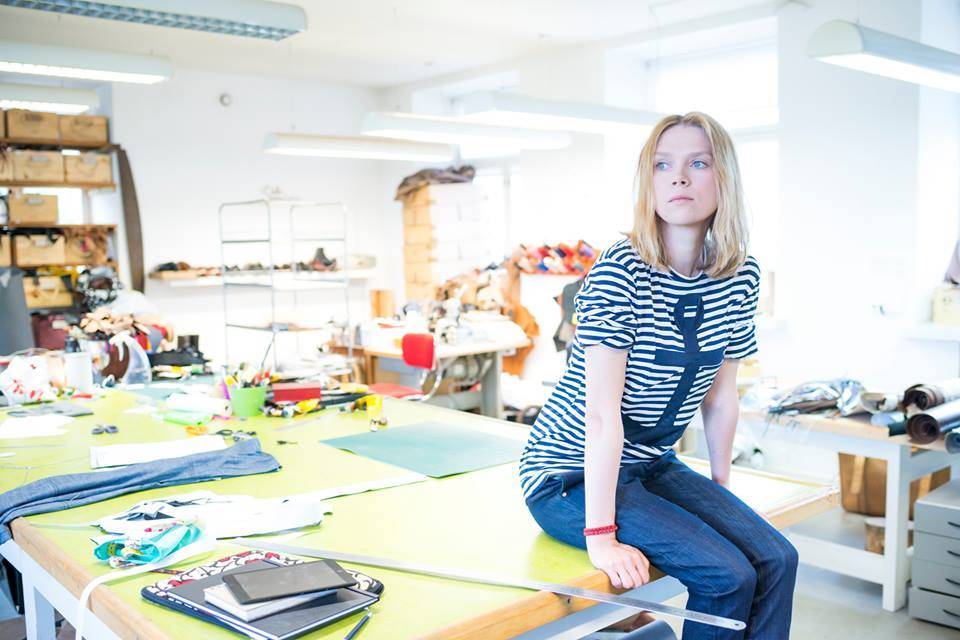It is typical of everything the Estonian fashion designer and entrepreneur Reet Aus undertakes to develop a snowball effect. Her activities, which are born out of creative impulses, soon begin to take on a global dimension – such as her upcycling project.
By Anneliis Aunapuu
When you meet the direct and confident Aus, and look into her clear eyes, you immediately see that she is not one of those artists brimming over with unexpressed thoughts or desperately seeking a stage. This girlish woman (who is a mother of three!) works at a fast and steady pace on a wide scale: fashion designer, theatre and film artist, entrepreneur and advocate of recycling who moves beyond the level of pretty slogans.
For someone who has a large international upcycling project on her hands, with many setbacks and surprises, she looks admirably calm, convinced that one person can indeed make a difference and stop the world from galloping over a cliff. The success of one project leads to success in other projects. One product today, an entire branch of the industry tomorrow. Dripping water can break down a rock.
Unused opportunities in local production and bold visions of the future
Aus holds a doctorate in art and design. At first it may seem that fashion and research are worlds apart, but in the last few years the activities of the textile and fashion departments at the Estonian University of Art have taken a huge leap forward from decorative arts and crafts, developing in depth and becoming serious players in the field. Of course, the effective and decorative nature of art is still important, as the annual high-flying fashion show of the university, approaching performance art in its execution, demonstrates (Aus was the main organiser of this event from 1995-2002).
Together the students and tutors of the Estonian Academy of Art seek unused opportunities in local production and create bold visions of the future. They learn to orientate themselves in contemporary technologies and new trends in research, and they have a bold approach to trying out options, as the “sky is the limit”. Students successfully compete with students of industrial design. They have reached an understanding of “the global” through the concepts of design – mass production – energy use – resources – waste… It seems that the process is taking on momentum.
Snowball starts to roll
It was Aus’s master’s project that started to live its own life and set a new path for her. The Hula Collection, created in collaboration with fashion designers Anu Lensment, Marit Ahven and Eve Hanson as their final master’s project, presented the idea of local production and quickly found popularity, becoming a recognised brand created by fashion students.
Aus’s principles started to find an outlet and her collections received more and more attention. But collections and small output did not seem like a sufficient solution to Aus, and this led to her commencing her doctorate studies by exploring the upcycling possibilities of the waste of the textile industry.
After successfully defending her PhD thesis, “Trash to Trend – Upcycling in Fashion Design”, at the Estonian Academy of Art, Aus received her doctorate in 2011. As a direct outcome of her research, she travelled to Bangladesh in order to participate in the creation of a documentary, together with Estonian filmmakers Jaak Kilmi and Lennart Laberenzi, about the environmental problems related to the textile industry. Quite unexpectedly, an even bigger snowball started to roll.
In observing the inner workings of the textile industry in Bangladesh, Aus became painfully aware of huge environmental problems related to the mass production of textiles, which are not always the result of carelessness or greedy grasping at profits. In talking to the management of Beximco, a large Bangaldeshi corporation, common ground was quickly found. This laid the foundation for a collaboration that led to grow two plants with one seed.
Textiles are the main exports of Bangladesh, but more and more we hear about the dire working conditions within the industry. One of the most ethical examples is a company called Beximco, which employs 32,000 workers and produces clothes for such world-famous brands as Tommy Hilfiger, Bershka, Calvin Klein and Zara – the company guarantees human rights and decent salaries. Aus was able to analyse the production at the factory, which helped assess the extent of waste and create opportunities to direct it back into production within the factory.
Upcycling and production
In seeking solutions to the problems, Aus felt the need for more specific environmental know-how and this brought her together with the Estonian environmental specialist, Markus Vihma. Their collaboration led to the creation of the “T-shirt with the smallest environmental footprint in the world” (the T-shirt was chosen as a test product because it is one of the most pointless textile products: about four billion T-shirts with logos are produced each year for various events and most of them become direct waste).
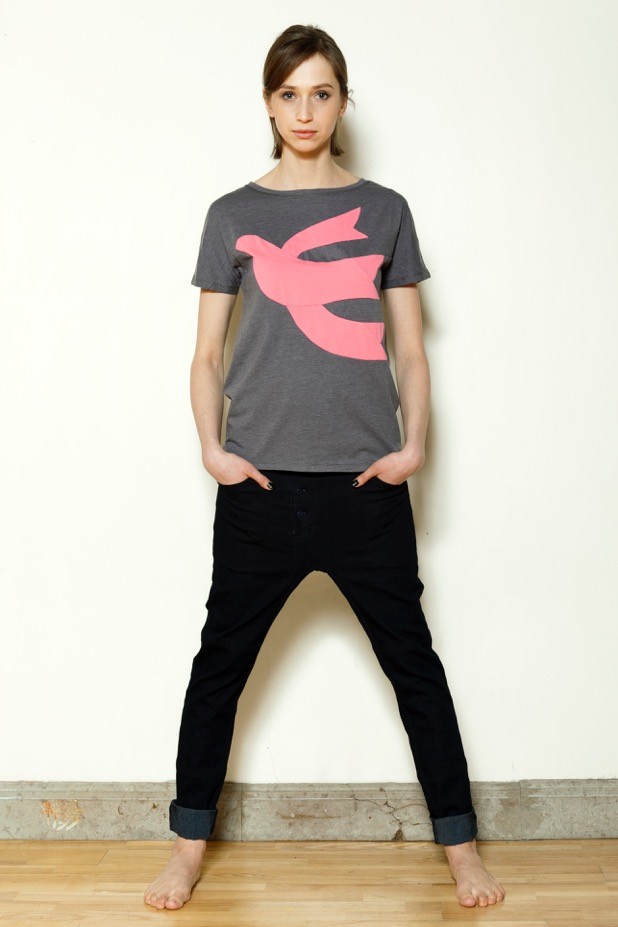 The new shirt – the “upshirt” – was assembled from production waste of quality rib knit fabric, and it looked great. The creators then turned to the crowdfunding platform Kickstarter and found an unexpectedly large number of supporters (among them British actor Jeremy Irons) who ensured half of the necessary starting capital. This helped start the production of the shirts.
The new shirt – the “upshirt” – was assembled from production waste of quality rib knit fabric, and it looked great. The creators then turned to the crowdfunding platform Kickstarter and found an unexpectedly large number of supporters (among them British actor Jeremy Irons) who ensured half of the necessary starting capital. This helped start the production of the shirts.
The design of the first product with the label Ausdesign (thanks to Reet’s surname Aus, it translates as “honest design” in Estonian) presented the logo of the company, an arrow pointing upwards, which is an ingenious way of visualising the concept of upcycling. The label of the shirt states that its production created 82% less CO2 and used 90% less water. It is the first known attempt in the world to mass produce the producer’s own production waste through upcycling.
The next project was creating the T-shirts for the biggest national celebration in Estonia: the Song and Dance Celebration 2014. This made the eco-shirt into a mass product.
The fact that Aus’s doctoral work and activities in upcycling also have a local impact was demonstrated at the exhibition of student work at the gallery of the Estonian Academy of Art. The works were created in the framework of the international innovation project “Trash to trend”. For two weeks, students attended lectures and master classes, resulting in clothes lines which were created out of the waste and defective products of the textile industry. Many of those could become industrial prototypes in the future.
Theatre and cinema
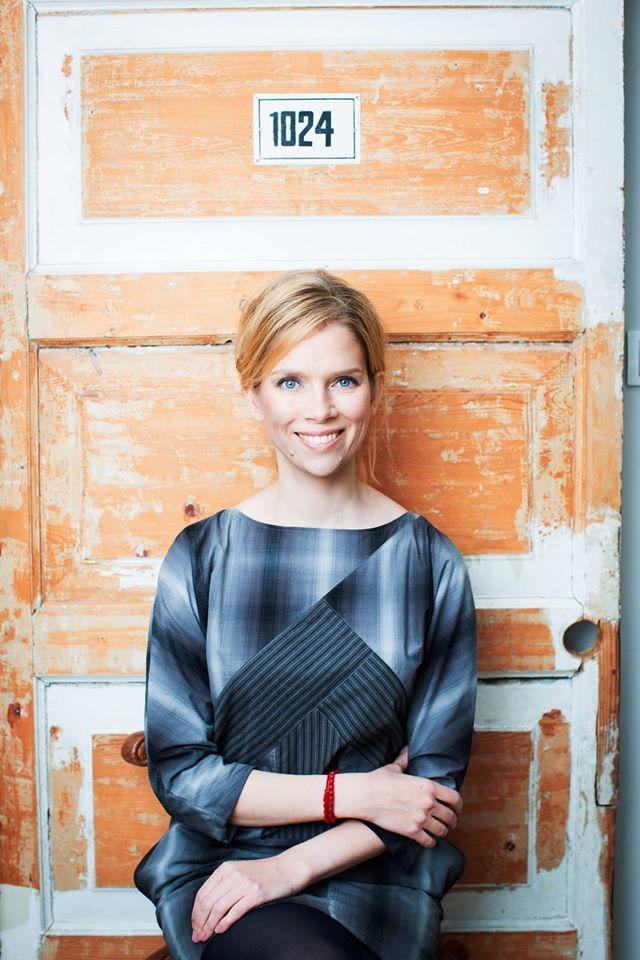 Along with her activities in upcycling, Aus, who also serves as a member of the board of the Union of Estonian Designers, still finds time to design theatre and film costumes. Like the fashion runway, the world of theatre and film is radically different from global industrial problems. Stage productions allow for creative fantasy and different themes help her maintain a flexible frame of mind.
Along with her activities in upcycling, Aus, who also serves as a member of the board of the Union of Estonian Designers, still finds time to design theatre and film costumes. Like the fashion runway, the world of theatre and film is radically different from global industrial problems. Stage productions allow for creative fantasy and different themes help her maintain a flexible frame of mind.
Aus has also participated as a costume designer in at least seven feature films and has helped create the stage look for numerous theatre productions. “This is where I find creative freedom, making costumes which are larger than life,” she says.
Activities on the horizon
The roots of Aus’s current activities go back in years and she is unique in the Estonian culture industry. Many designers have tried to organise their own production, but their volumes remain very limited. Others have found their niche in tailor-made costumes.
Aus has found a way to incorporate powerful mass production, change routines and make use of production waste and over-production. This helps future consumers save money (which would be spent on products made of new fabric), reduces the costs of material and fabric producers (lowering production-processing costs) and reducing overhead in the sewing factory (lowering the costs of waste management). In addition, this helps alleviate over-production, which is created by the unpredictable demands of the market. At the same time, environmental risks are reduced.
This kind of environmentally sustainable thinking is becoming increasingly popular, but the ideas are seldom put into practice. Aus, who also heads the sustainable textiles study group at the Estonian Academy of Art, has managed to achieve real tangible solutions with her activities: there is a product, there is mass production based on ideals and the products have also reached shops.
I
This article was originally published in Life in Estonia magazine. Pictures courtesy of Reet Aus


